LAB REPORT
Science and Technology Making Headlines
June 10, 2022

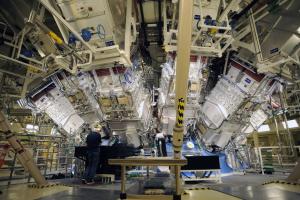
Engineers work outside the structure where the array of lasers at the National Ignition Facility at Lawrence Livermore Laboratory are focused.
One big deal
For every power tool and piece of equipment in the average tool shed or garage, there’s a super-sized version out there. When challenged to build some of the world’s largest structures and most powerful machines, engineers need tools that are sized up to the task. Here are some of the biggest and brawniest industrial and scientific tools on the planet.
The world’s most powerful laser is actually 192 separate beams aimed at a target roughly the size of a pencil eraser. Inside the National Ignition Facility at the Lawrence Livermore National Laboratory, these lasers emit a blinding flash of light lasting only a billionth of a second but delivering 2 million joules of energy. Temperatures at the target site instantly reach 180 million degrees Fahrenheit.
The job of this ultra-powerful laser is to apply extreme heat and pressure — similar to the conditions found inside stars — to fuse hydrogen atoms together and release massive amounts of energy (fusion reaction). Scientists hope that this technology will usher in an era of unlimited, carbon-free energy.

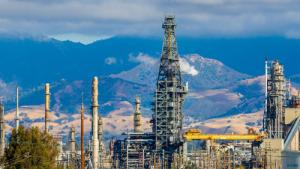
The Marathon Petroleum Corporation’s Martinez, California, refinery. A plan released by the California Air Resources Board recommends most of the state's oil refineries install carbon capture technology by 2030. Such technology could be used to capture carbon emissions, so they don't go out into the atmosphere. Photo courtesy of Marathon Petroleum Corporation.
Carbon capture rocks on
The California Air Resources Board’s proposal, called a scoping plan, outlines policies that would transition the economy away from fossil fuels. The purpose of the plan is to fulfill state mandates to reduce planet-warming emissions 40 percent below 1990 levels by 2030 and achieve carbon neutrality by 2045.
George Peridas, director of carbon management partnerships at Lawrence Livermore, said California is well-positioned to launch carbon capture and storage projects in parts of the state with deep sedimentary rock formations, including the Central Valley, which could serve as prime locations to store carbon dioxide.
“The Central Valley has a world class geology — that means just the right kinds of rocks for safe and permanent storage,” he said. “Carbon capture and storage is well-understood, heavily regulated, available for deployment today and has an overwhelmingly positive track record.”
Globally 27 carbon capture and storage projects are operating so far.

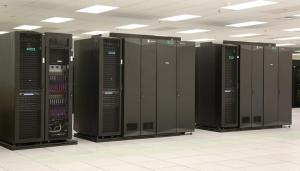
Three testbed machines for LLNL’s future exascale El Capitan all ranked among the top 200 on the latest Top500 List of the world’s most powerful computers, released at the International Supercomputing Conference. Photo by Katrina Trujillo/LLNL.
Break on through
The world’s fastest supercomputer just broke the exascale barrier. This milestone will allow for complex calculations that benefit a wide range of research areas
The world’s fastest supercomputer, located at Oak Ridge National Laboratory, performed more than a quintillion calculations per second, entering the realm of exascale computing. That’s according to a ranking of the world’s speediest supercomputers called the TOP500. The computer, known as Frontier, is the first exascale computer to be included on the biannual list.
Lawrence Livermore’s three predecessor machines for LLNL’s future exascale system El Capitan managed to rank highly on the latest Top500. El Capitan goes online in 2023.

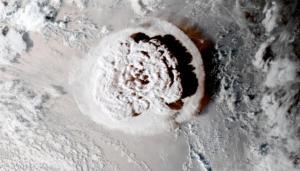
Satellite image of the Hunga volcano on Jan. 21, 2022. Image courtesy of the National Oceanic and Atmospheric Administration.
That’s one big blast
The volcanic blast that destroyed the uninhabited island of Hunga Tonga Ha’apai on Jan. 15 is now officially the largest explosive eruption of the 21st century so far. And it was the largest since the 1991 eruption of Mt. Pinatubo in the Philippines.
The size of the Tonga explosion makes it the largest ever recorded by modern sensor technology. Measurements of the pressure wave the blast created — which traveled around the world four times over a six-day period – was equivalent to the 1883 eruption of the infamous Krakatoa.
A team of international researchers including one from Lawrence Livermore, using data from global barometers, found the pressure wave created by the destruction of Hunga Tonga Ha’apai reverberated across the planet four times over nearly a week. LLNL put the findings this way: The atmospheric wave data showed that the eruption propagated for four passages around the Earth over six days. NASA determined that the eruption was “hundreds of times more powerful than the atomic bomb dropped on Hiroshima.”
The eruption was equivalent in energy to the eruption that destroyed Krakatoa in the 19th century and makes other recent eruptions look small by comparison. Work done at Lawrence Livermore was focused on so-called Lamb waves – acoustic-gravity waves traveling along Earth’s surface:

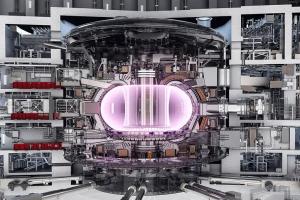
The ITER fusion reactor will contain the world’s largest magnet, which stands vertically in the center of this illustration. Photo courtesy of ITER.
The door to fusion might have just opened
In the world of renewable energy, there’s perhaps no more ambitious goal than fusion power. This involves fusing hydrogen atoms to create helium — a process that generates a humungous amount of energy as a result. It’s a reaction that occurs every single moment in the sun, but replicating it on Earth is a much rarer and arduous process. If we succeed, however, we’d have access to a clean source of renewable electricity that meets our ever-growing energy needs.
To that end, researchers are chasing after a phenomenon called “ignition,” which is when a fusion reactor generates more energy than was needed to create the initial reaction. Some use tokamaks, but there’s only so much hydrogen fuel you can put into a tokamak before everything starts going horribly wrong.
To solve this issue, scientists began to research different equations to measure the maximum amount of hydrogen you can put inside of a tokamak before disruption. One law that eventually caught hold and became a mainstay in the fusion research world is known as the “Greenwald limit,” which says that the amount of fuel that can be used in a tokamak is directly correlated to the radius of the machine. The researchers behind ITER have even built their machine based on this law.
“The Greenwald limit is what we call an ‘empirical’ limit or law, which basically means that it’s like a rule-of-thumb based on observations made on past experiments,” Alex Zylstra, an experimental physicist at Lawrence Livermore National Laboratory. “These are very useful, but we always need to be cautious when applying them outside conditions where we have data from experiments.
“Fusion is an extremely challenging problem — both scientifically and technologically, and making fusion power a reality requires many advances made one step at a time,” Zylstra added. “If this study is further validated, especially on machines like ITER, it will certainly help the magnetic fusion community credibly design and optimize future designs for experimental and power-generating facilities.”





